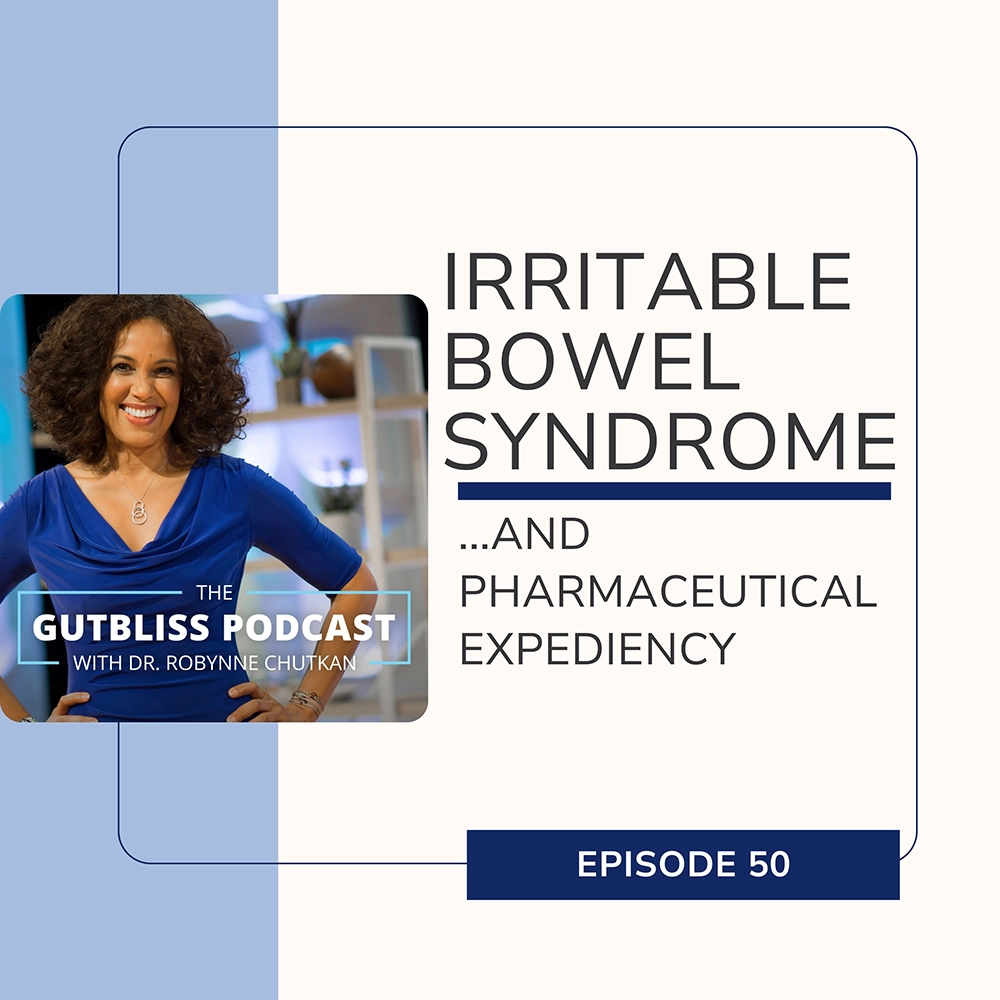On today’s show, I’m continuing the information provided in last week’s episode on dysbiosis and SIBO – small intestinal bacterial overgrowth, and today I’m going to be talking about diagnosis and treatment. Currently 2 types of tests for SIBO: upper endoscopy with SB aspirate is the gold standard but it’s expensive and invasive and very few gastroenterologists actually do it. Cutoff to diagnose SIBO is >1000 organisms/ml in the aspirate but there are problems with contamination of the sample, and also, it’s difficult to culture out these organisms in a lab. Breath testing is more widely used. You administer a poorly absorbed sugar carbohydrate like glucose/lactulose given by mouth, which is then fermented by bacteria in the small intestine, and then hydrogen and methane gases are produced. The gases diffuse into the bloodstream, are exhaled by the lungs and measured.
North American Consensus statement says a rise in hydrogen of 20 parts per million (ppm) or more above baseline by 90 minutes is considered a positive glucose or lactulose breath test result for SIBO. Intestinal methanogen overgrowth (IMO) is defined as methane of 10 ppm or more at any point during the test. I’m not going to really spend any time on the difference between IMO and SIBO because that conversation is focused on response to antibiotic therapy, which is not something that I recommend for either condition.
Breath testing has its own pros and cons. Pros: safe, simple, and noninvasive, widely accessible and inexpensive with home testing option. Cons: Doesn’t directly measure microbial overgrowth – measures the gaseous byproducts, not the microbes themselves. Accuracy relies heavily on patient compliance with the protocol, including specific instructions regarding oral care, exercise, smoking, diet and medications. Various commercial home tests use thresholds for breath hydrogen and methane that are different from cutoffs outlined in clinical guidelines and that often leads to false-positive test results. May include a combined criteria of hydrogen and methane, which are not supported by data and can also lead to false-positive results. Breath test results are affected by variations in transit time – rapid or slow transit time leads to false positives and false negatives. Conditions or medications that affect the small intestine also affect test results, including gastroparesis, constipation, diverticulosis, narcotic medications, etc. The bottom line is there is no perfect test and false positives and negatives are a real concern. When we come back – what about empiric treatment without relying on a test result?
What about not testing and just treating empirically based on a clinical diagnosis?The problem with that is there’s a lot of overlap with other conditions like acid reflux and IBS so you can’t make a diagnosis just based just on symptoms. Empiric treatment is fine if the treatment consists of what I’m recommending, which is primarily dietary and lifestyle changes with literally no downside, but not so fine if you are planning on taking antibiotics that can further damage your microbiome and have other undesirable side effects. Most physicians treat SIBO with an oral antibiotic called rifaximin, also known as Xifaxan. The theory is that because rifaximin has activity against a broad spectrum of bacteria that are overgrowing in the small intestine, using it to reduce their populations should lead to an improvement in symptoms. And it frequently does. The problem is that rifaximin, like most antibiotics, also has activity against essential bacteria and diminishes those populations, too. The result is usually an initial improvement followed by relapse a few months later. But there’s also another problem: Xifaxan is not FDA approved to treat SIBO, or dysbiosis. There are three current indications for rifaximin: treatment of patients with traveler’s diarrhea caused by Escherichia coli, treatment of hepatic encephalopathy in patients with advanced liver disease, and irritable bowel syndrome with diarrhea (IBS-D). That’s it! And while there is definitely some overlap between IBS-D and SIBO, the majority of people being treated with Xifaxan do not have a diagnosis of IBS.
My problem with Xifaxan is not that it doesn’t work. Many people describe initial improvement after taking it. The reason I don’t prescribe it is that it doesn’t address the root cause of the problem, which for most people with SIBO is microbial imbalance due to a reduction in the numbers of healthy bacteria in their gut. When you simply kill off the excess bacteria without addressing the imbalance, the problem tends to recur, which is exactly what I see in patients treated with Xifaxan. And they’re often treated three and four and sometimes even five times, in an endless cycle of improvement and then relapse. So it’s pretty clear that Xifaxan is not my 1st choice for treating SIBO. When we come back, I’m going to tell you what I do recommend and have used successfully in many patients to reverse their symptoms.
My approach to SIBO and dysbiosis is based on decades of experience taking care of hundreds of patients suffering from dysbiosis, with symptoms ranging from mild gas and bloating to serious autoimmune diseases. This approach doesn’t necessarily work for everyone, but what I love about it is that the worst thing that can happen is it improves your health. There is nothing in what I’m going to recommend that is toxic to you or your microbes and so much about this plan is just sensible good advice. The approach is three-pronged:
1. Removing medications, practices, and foods that are damaging to your microbiome.
2. Replacing missing or depleted essential bacteria through exposure to soil microbes, ferments, and robust pre, pro, and post-biotics.
3. Restoring your gut with medicinal foods, select micronutrients, and the right environment.
There is a lot to go over here, and I literally wrote an entire book about this, my second book, The Microbiome Solution. So if you want the entire program, that would be where you would find it. But I want to give you my top 10 tips for restoring your microbiome if you are struggling with SIBO or dysbiosis Let’s get started with the most important part: what to eat.
1. Eat 30 or more different plants per week: Plants, defined as vegetables, fruits, legumes, grains, nuts, and seeds (anything that comes out of the ground or off a shrub, vine, or tree), provide the raw material for bacterial fermentation, which produces short-chain fatty acids (SCFAs)— arguably the most important metabolites for gut and immune function, so eating more plants is the number one strategy for improving your microbiome. The diversity and number of plants you eat is reflected in the diversity and number of bacteria you grow in your gut, so you should try to eat lots of different types every day. How do we know this? In 2018 researchers from the American Gut Project published the largest human microbiome study ever done, involving over ten thousand people from 45 different countries. Their study showed that the number of plant types in your diet is the primary factor that determines the health and diversity of your gut microbiome. Regardless of what diet they ate (vegetarian, vegan, omnivore, etc.), participants who ate more than thirty different plant types per week had gut microbiomes that were much healthier than those who ate ten or fewer types of plants per week. My 1- 2- 3 rule can help you get more plant foods onto your plate every day. Here’s how it works: eat one vegetable in the morning, two at lunch, and three at dinner. There are lots of ways to accomplish this. You could have a smoothie with kale or a spinach omelet for breakfast, salad with chopped raw veggies for lunch, and steamed asparagus plus a salad of lettuce and cucumbers with your dinner. Or do what I do and make it 3-2-1 instead by starting off the morning with a green smoothie with at least three different vegetables in it. The 1-2-3 rule is a great way to make sure you’re getting enough dietary fiber without getting bogged down in too many details, and focusing on building your meal around plants will help you think about meat as a side dish rather than the main event— a great microbe-boosting strategy.
2. Choose Your Carbs Carefully: Complex carbohydrates (“good” carbs) are typically high in fiber and include foods like fruits, vegetables, some whole grains, beans, and brown rice. Because of their high fiber content, these foods don’t cause a surge in insulin levels and, from a microbial point of view, they’re some of the most important foods for nurturing essential microbes. Resistant starches and inulin are two types of good carbs that you need to know about, because they’re great for your microbiome. Resistant starches function more like dietary fiber than starch, encouraging the growth of healthy microbes in your colon and acting as a prebiotic food: one that actually feeds your gut bacteria and reduces production of potentially harmful compounds. Food high in resistant starches include green bananas, green peas, lentils, uncooked rolled oats, white beans. Inulin is another type of complex carbohydrate that also has prebiotic qualities. Foods high in inulin include artichokes, asparagus, bananas, garlic, leeks, onions.
3. Eat some Ferments: Fermented vegetables such as sauerkraut, kimchi, and pickles are microbiome rock stars because they contain live bacteria (probiotics) and prebiotic fiber to nourish your gut bacteria, and during the fermentation process the microorganisms in fermented foods produce lots of different post-biotic nutrients, so a jar of sauerkraut is the ultimate medicinal food. A study by researchers at Stanford found that eating fermented foods every day resulted in marked reductions in over a dozen different inflammatory compounds in the body, plus more diversity of gut bacteria. The more fermented foods people ate, the greater the number of microbial species that bloomed in their guts.
4. Eliminate UPFs (ultra-processed foods): Staying away from foods that have been modified and adulterated from what nature intended is good for your microbiome for a number of reasons: they usually have additives and preservatives designed to improve taste, texture, flavor and shelf life and many of those chemical ingredients are harmful to your gut microbes. Plus, most of the healthy fiber is removed during processing, and they don’t provide enough nutrients to encourage the growth of healthy bacteria. I’m talking here about NOVA Classification type 4 foods.
When we come back what are some of the other lifestyle you need to pay attention to – and what about medications?
5. Drink alcohol in moderation—or not at all: Remember, before we had antibiotics to kill microbes, we had alcohol. Make sure you’re not exceeding 7 drinks/ week. And keep in mind that “none” may be easier to navigate than “some,” so if you’re struggling to moderate your drinking, consider whether it may actually be easier to give it up altogether.
6. Get moving: It turns out exercise isn’t just good for us, it’s also really good for our gut microbes. A study comparing stool samples from athletes to those of healthy men of the same age who weren’t avid exercisers found the athletes’ stool samples had greater species diversity and significantly higher levels of beneficial species than their peers. The good news is you don’t need to be a professional athlete or work out every day to benefit from the microbe-boosting effects of exercise. Just elevating your heart rate to 20 percent above baseline with a brisk walk for thirty minutes three to five times a week is enough to stimulate peristalsis, which keeps the products of digestion moving and can help prevent stasis that’s associated with SIBO.
7. Be judicious with medications: As I mentioned in Part 1 of this episode last week, antibiotics and acid blockers like PPIs are a major risk factor for SIBO and dysbiosis, And while there are some legitimate and appropriate indications for these drugs, we also know they are widely overprescribed so make sure to ask your healthcare provider whether the acid blocker or antibiotic they’re recommending is absolutely necessary. And the same goes for pain medication, BCP, hormone replacement therapy and immunosuppressants. It’s really hard to create meaningful recovery in your microbiome if you are simultaneously using medications that are damaging your microbes. For a complete list of problematic medications check out my 4th book The Anti-Viral Gut.
8. De- stress yourself: For most people, chronic stress (the bad kind) is subconscious and not something you can voluntarily turn on or off. But what you can control is your response—you can mindfully and intentionally create a healthier way of reacting to stress. Most stress is situational, but different people respond differently to the same set of stressors. Even if you’re the ultimate type- A control freak who has a hard time letting go, you can train yourself—the same way you learn how to hit a tennis ball, ride a bike, or play the piano—to change your response to stressful circumstances, and with enough practice, you can get really good at it. And remember that statistic I mentioned from last week’s episode: studies show that stress can increase levels of harmful bacteria a thousand-fold in 24 hours!
9. Get Dirty: Soil has been essential in the evolution of the human microbiome and provides us with beneficial gut microorganisms, nutrients, genes, and growth-sustaining molecules. Unfortunately, our contact with soil has been greatly reduced, and together with our modern lifestyle and suboptimal diet, this has led to reduced biodiversity in our own internal soil in our gut and immune system. The good news is that close contact with soil microbes can help to replenish our microbiome, especially when we’re also decreasing our consumption of livestock and dairy products and eating a higher diversity of unprocessed organically grown plants. In addition to spending more time outside in nature, here are some additional dos and don’ts for introducing a little more dirt into your life:
DO visit and purchase your food directly from farms when possible.
DO consider getting a dog, cat, rabbit, or other pet that will bring a little dirt into your house: children with pets have fewer infections and require fewer antibiotics.
DO let your children get dirty and play on the ground (good for grown- ups, too).
DO consider bathing less often.
DO get your hands dirty by starting a garden. Exposing your immune system to the trillions of microbes in soil is a great way to literally grow a good gut garden.
DO open your windows. Letting nature and aerosolized dirt particles in will improve the health and diversity of the microbes in your home.
DO fill your house with plants for additional soil exposure.
10. What about Probiotics?: The role of probiotics in treating small intestinal bacterial overgrowth (SIBO) is unclear, and there is no clear evidence that probiotics can eradicate SIBO. Some studies suggest that probiotics help with SIBO, by reducing hydrogen production and improving motility. Others have shown that probiotics may worsen symptoms of bloating, gas, and brain fog. The effects of probiotics may depend on the specific strain used. For example, Saccharomyces boulardii – which is actually a yeast not a bacteria – has been found to be helpful in some studies in inhibiting the growth of pathogenic bacteria, and I use an 8 strain probiotic (Visbiome) for my patients with dysbiosis and autoimmune disease. What I generally tell people is try it for 60 days and if you feel like it’s helping you might want to consider continuing it, but if after two months you’re not noticing any difference at all, or you’re noticing that your symptoms are worse, then you should stop it.
I want to leave you with three takeaways about diagnosing and treating an imbalanced microbiome:
1. SIBO is one form of a larger condition called dysbiosis, which refers to general imbalance in your microbiome and in addition to causing SIBO, dysbiosis is at the root of multiple medical conditions, including not just gut disorders, but autoimmune diseases, skin conditions, mental health disorders, diabetes, obesity, and even cancer.
2. Testing for SIBO is imprecise. The tests are fraught with false positives and false negatives, and they’re not super reliable, so keep that in mind if you are planning on doing a breath test for SIBO.
3. This is generally not a one and done type of situation. Whether you’re concerned about multiple manifestations of dysbiosis or dealing specifically with SIBO, It’s unlikely that you are going to be able to just take a remedy like an antibiotic and be cured. You have to pay attention to what is causing the microbial imbalance in the first place.
So that’s it for this edition of my two-part series on dysbiosis and SIBO. If you want more details on causes, symptoms, diagnosis, and treatment; check out my second book The Microbiome Solution which you can find wherever books are sold.









